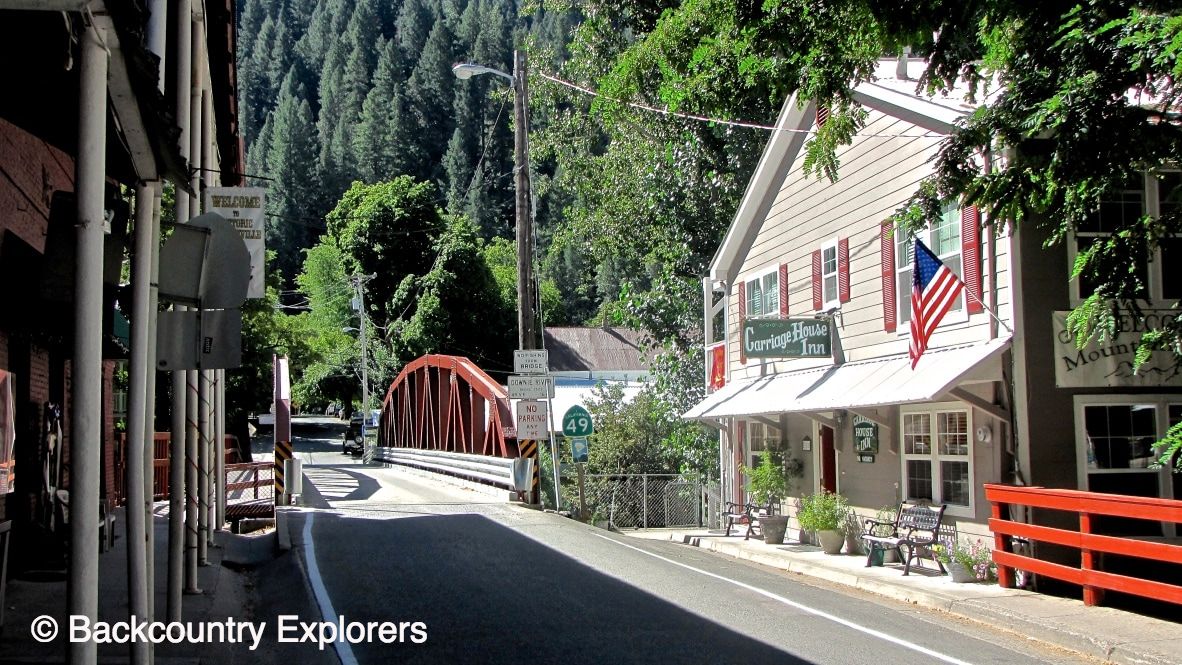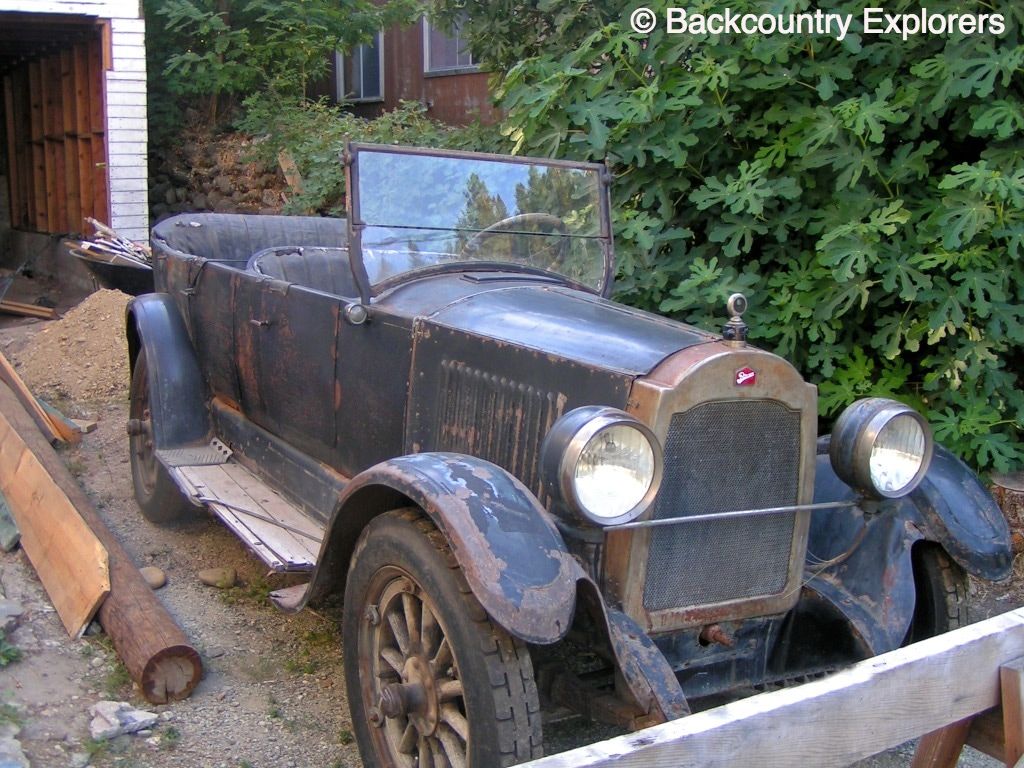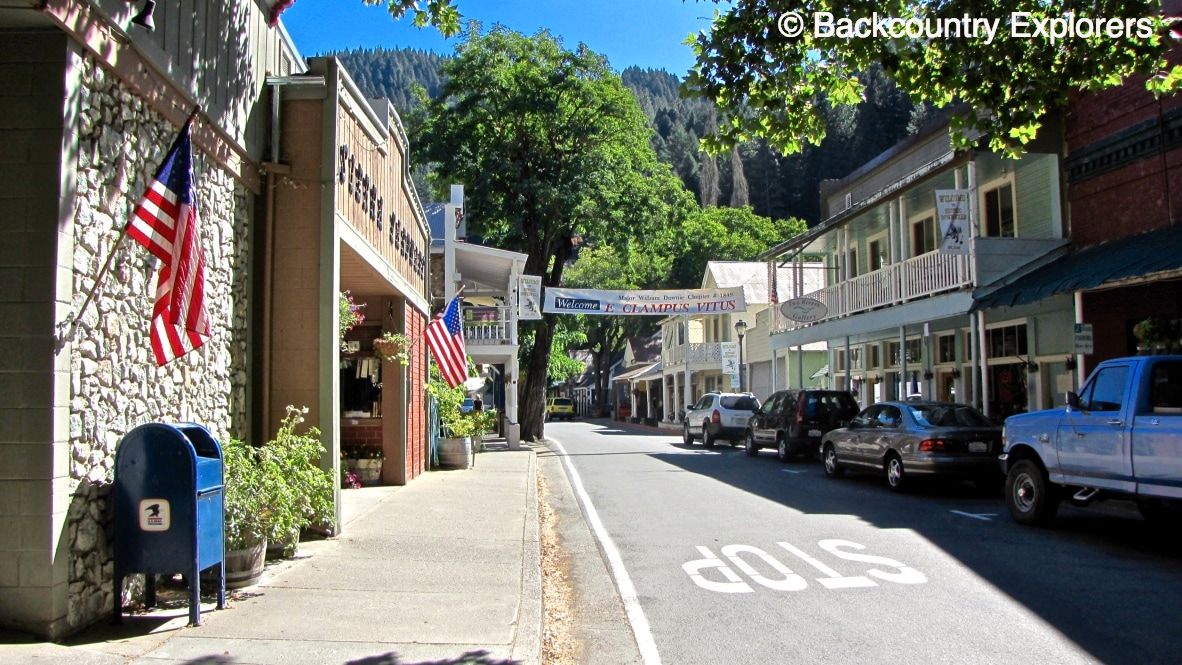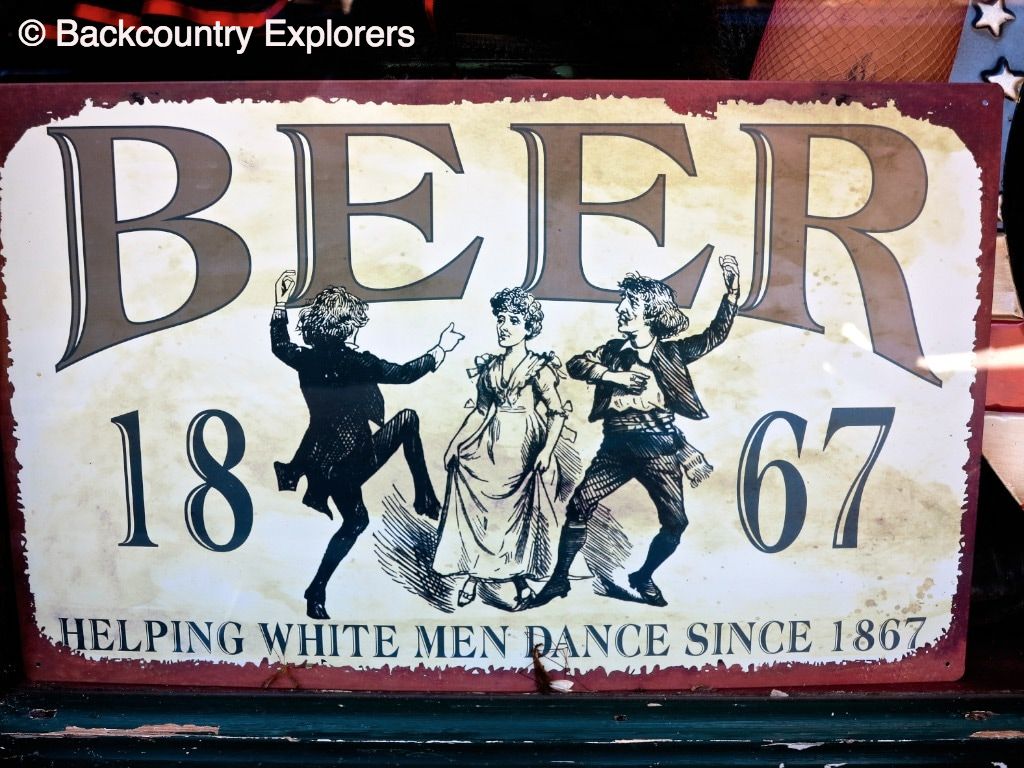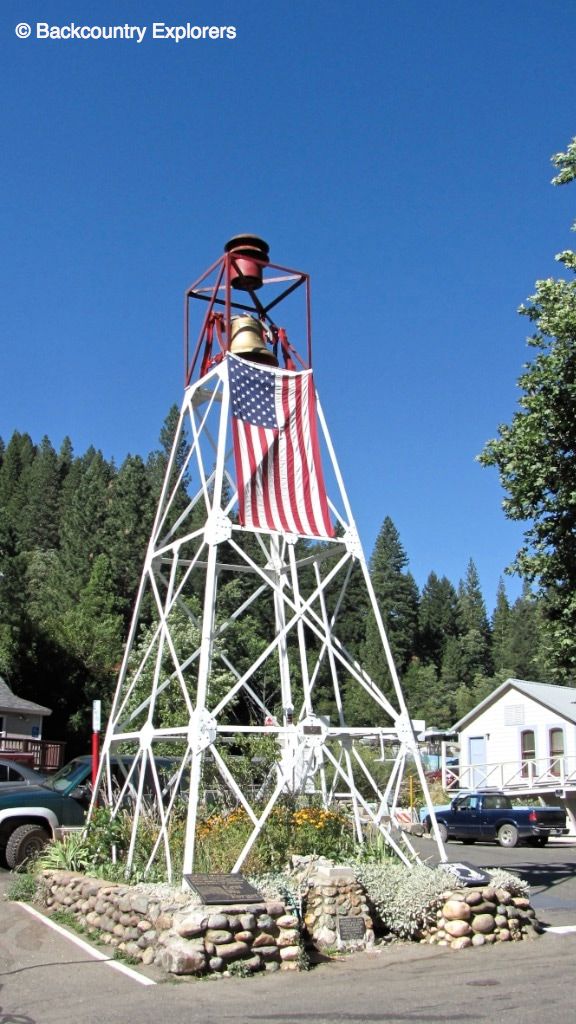Downieville, California

Downieville Beginings
Downieville is located were the Downie river flows into the larger north fork of the Yuba river first commonly known as “The Forks”. The first generally confirmed white men in the area were Philo Haven, Carlos Anderson,Warren Goodall, and Thomas Angus. They worked a placer named Little Rich Bar about a half mile south of Downieville’s current location. William Downie, many times called Major Downie, was a Scotsman who arrived first at the forks in November 1849 and for whom the town was later named. Accompanying Downie that first year were ten Black sailors, an indian, an Irish boy named Michael Deverney and a Kanaka named Jim Crow.
With supplies running low, Downie sent Jim Crow and seven other men down below for more provisions. The major and his remaining men wintered on Zumwalt Flat above the current town in the winter of 1849 by building a few cabins and working the rocky ledges under the snow taking out $100 to $300 dollars of gold a day. By late February the snows forced the men to remain in their cabins and by March the men resorted to rationing their remaining food. Not to long later that spring Jim Crow returned with new supplies and the rush for gold was on.
There was a flood of miners into the area that spring and “The Forks” became the center of the wide number of mining camps in the surrounding hill and streams and before long the name was changed to Downieville. The population had grown to over 6000 people by 1854. In conparison the city of Los Angeles was only about 4000 at that same time. Downieville has been the county seat for Sierra County since it was formed in 1852 and at one time was even considered as a candidate to become the capital of California
Downieville is located were the Downie river flows into the larger north fork of the Yuba river first commonly known as “The Forks”. The first generally confirmed white men in the area were Philo Haven, Carlos Anderson,Warren Goodall, and Thomas Angus. They worked a placer named Little Rich Bar about a half mile south of Downieville’s current location. William Downie, many times called Major Downie, was a Scotsman who arrived first at the forks in November 1849 and for whom the town was later named. Accompanying Downie that first year were ten Black sailors, an indian, an Irish boy named Michael Deverney and a Kanaka named Jim Crow.
With supplies running low, Downie sent Jim Crow and seven other men down below for more provisions. The major and his remaining men wintered on Zumwalt Flat above the current town in the winter of 1849 by building a few cabins and working the rocky ledges under the snow taking out $100 to $300 dollars of gold a day. By late February the snows forced the men to remain in their cabins and by March the men resorted to rationing their remaining food. Not to long later that spring Jim Crow returned with new supplies and the rush for gold was on.
There was a flood of miners into the area that spring and “The Forks” became the center of the wide number of mining camps in the surrounding hill and streams and before long the name was changed to Downieville. The population had grown to over 6000 people by 1854. In conparison the city of Los Angeles was only about 4000 at that same time. Downieville has been the county seat for Sierra County since it was formed in 1852 and at one time was even considered as a candidate to become the capital of California
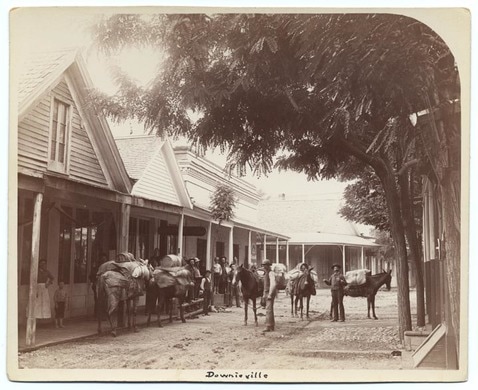 Freight team of miles downtown Downieville
Freight team of miles downtown Downieville
Early Commerce
By 1850 in a large log cabin Mrs. Judge Galloway opened the first eating-house. Soon after The pioneer Meat market sprang to life by Ned Barker and the town grew rapidly from there.
Life for the Yuba miners was neither cheap or easy. All provisions had to be brought by freight teams of mules and just the bare necessities like boots for $150 or sugar for $4 were expensive.
The town had many saloons in its day along with dry goods stores, restaurants, and a Langton Express office along with telegraph and stage coach lines coming later on.
By 1850 in a large log cabin Mrs. Judge Galloway opened the first eating-house. Soon after The pioneer Meat market sprang to life by Ned Barker and the town grew rapidly from there.
Life for the Yuba miners was neither cheap or easy. All provisions had to be brought by freight teams of mules and just the bare necessities like boots for $150 or sugar for $4 were expensive.
The town had many saloons in its day along with dry goods stores, restaurants, and a Langton Express office along with telegraph and stage coach lines coming later on.
 Craycroft Building
Craycroft Building
Craycroft Building
Still standing since 1852 is the Craycroft building which has had many uses over the years including the housing of the Sierra Citizen printing office, a clothing store, restaurant, and temporary court house proceedings, grocery, and currently a saloon. This large brick building replaced an earlier Craycroft Saloon burnt down in the fire of 1852. Jack Craycroft build the building using locally made bricks and it contained one of the longest bars in California made of a single sawed board over seventy feet long.
Still standing since 1852 is the Craycroft building which has had many uses over the years including the housing of the Sierra Citizen printing office, a clothing store, restaurant, and temporary court house proceedings, grocery, and currently a saloon. This large brick building replaced an earlier Craycroft Saloon burnt down in the fire of 1852. Jack Craycroft build the building using locally made bricks and it contained one of the longest bars in California made of a single sawed board over seventy feet long.
|
Mountain Messenger Building
This building also dated to 1852 and known as the Mackerman & Co. building with Joseph Mackerman using it as both home and Brewery. Currently it houses the Mountain Messenger, California’s oldest weekly newspaper. With it’s iron doors and three foot thick walls it was one of the most fireproof buildings in town. |
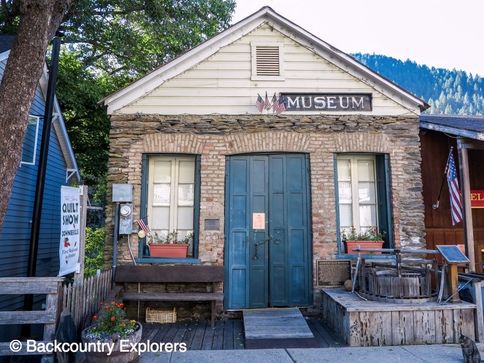 Downieville Museum
Downieville Museum
Museum Building
One of the first buildings erected in town in 1852 was a stone structure of horizontal flat rocks and big iron doors and shutters. It was built with Chinese labor. The building was owned by J.M.B Meroux who was one of the early pioneers. Today the building houses the Museum.
The Downieville fires
Downieville’s first fire started the evening of February 19,1852 and the blaze raced through the ramshackle cabins and cloth tents in quick order. With many folks losing everything they had the damages were estimated at $150,000. The town however rebuilt quickly and with a more permanent structures.
On New Years day in 1858 Downieville suffered a second devastating fire which burned with such fury everything in its path was destroyed, even the Jersey bridge.
One of the first buildings erected in town in 1852 was a stone structure of horizontal flat rocks and big iron doors and shutters. It was built with Chinese labor. The building was owned by J.M.B Meroux who was one of the early pioneers. Today the building houses the Museum.
The Downieville fires
Downieville’s first fire started the evening of February 19,1852 and the blaze raced through the ramshackle cabins and cloth tents in quick order. With many folks losing everything they had the damages were estimated at $150,000. The town however rebuilt quickly and with a more permanent structures.
On New Years day in 1858 Downieville suffered a second devastating fire which burned with such fury everything in its path was destroyed, even the Jersey bridge.
 Sierra County miners all who struck it rich at least once in their life
Sierra County miners all who struck it rich at least once in their life
Mining history
The largest gold nugget ever found in the U.S. and the third largest in the world was discovery in 1853 by G.G. Finney near Downieville. It was shaped like a dumb bell and weighed 5,009 ounces and valued at $84,302 at the time and was said to be 97% pure. Finney broke the nugget in two trying to dig it out with his pick. Finney nick name was “Finney from Old Virginny”. Finney went on to Nevada and played a prominent role in the Comstock load and giving his name to Virgina City.
There were rich diggings in many areas. At Zumwalt flat near the forks each miner averaged 5 ounces a day for three and a half hours work. Just across from Zumwalt flat was the tin cup diggings were in 1850 three miners had a rule that they had to fill their tin cups full of gold each day.
With more miners coming into the area and so many claims being staked it was natural for disputes to arise making it necessay to establish a set of mining rules. One such rule was that the size of a claim was limited by just thirty feet.
After the easy gold was dug the miners then built flumes to channel the Yuba river away from it’s exsisting bed so they could thoroughly process the river bed bottom of it’s gold. The winter rains would end up washing the fumes away in a torrent of water.
The largest gold nugget ever found in the U.S. and the third largest in the world was discovery in 1853 by G.G. Finney near Downieville. It was shaped like a dumb bell and weighed 5,009 ounces and valued at $84,302 at the time and was said to be 97% pure. Finney broke the nugget in two trying to dig it out with his pick. Finney nick name was “Finney from Old Virginny”. Finney went on to Nevada and played a prominent role in the Comstock load and giving his name to Virgina City.
There were rich diggings in many areas. At Zumwalt flat near the forks each miner averaged 5 ounces a day for three and a half hours work. Just across from Zumwalt flat was the tin cup diggings were in 1850 three miners had a rule that they had to fill their tin cups full of gold each day.
With more miners coming into the area and so many claims being staked it was natural for disputes to arise making it necessay to establish a set of mining rules. One such rule was that the size of a claim was limited by just thirty feet.
After the easy gold was dug the miners then built flumes to channel the Yuba river away from it’s exsisting bed so they could thoroughly process the river bed bottom of it’s gold. The winter rains would end up washing the fumes away in a torrent of water.

Juanita, the only woman hanged in California
It was the fourth of July 1851 and most all the miners put down their pans and shovels and thousands of folks assembled in town for the big parade, and fan fare including a thrilling Independence day speech by John B. Weller who later became governor of California in 1858. As was the case with most celebrations the festivities included free flowing alcohal throughout the day and late into the night.
That same night after much carousing, Frederick Alexander Augustus “Jack” Cannon a very well-liked Scotchman miner, and two of his companions started to stagger home. Cannon was the worst of the three and stumbled over rocks and feet on the way. As they passed a small adobe home he stumbled again and fell through the front door of the home and landed inside on the floor. The home was occupied at the time by it’s owners a Mexican named Jose, and his Mexican companion named Josefa Loaiza-Segvia also known as Juanita. His companions brought Cannon to his feet and they proceeded on their way home.
Juanita was 23 years old and a very beautiful petit woman. In several accounts she was said to have a hot blooded personality. She often dressed in her native dresses of bright colors and had long black flowing hair.
The following morning Cannon awoke and with a companion returned to Juanita’s home to apologize. Juanita and Jose spoke with Cannon but Juanita’s temper drove her to plunge a large bowie knife through Cannon’s sternum piercing his heart and killing him instantly.
Word of the murder traveled though town like wild fire and a mob demanded instant justice. A quick mock trial was held without any defense allowed, and Juanita was sentenced to be hanged that same day. She was taken to the Jersey bridge were she stood and threw her hat to a friend and said, “Adios senores”, took the noose into her own hands and carefully placed it around her neck under her hair. Her hands were tied and a white handkerchief was placed over her eyes. A signal pistol was fired and the lashings of the two planks she stood on were cut and she dropped three feet to her death.
Juanita became the first and only woman hung in California. (As with any story there are many versions of Juanita however based on accounts by William Downie and others, this seems to be one of the most plausible)
It was the fourth of July 1851 and most all the miners put down their pans and shovels and thousands of folks assembled in town for the big parade, and fan fare including a thrilling Independence day speech by John B. Weller who later became governor of California in 1858. As was the case with most celebrations the festivities included free flowing alcohal throughout the day and late into the night.
That same night after much carousing, Frederick Alexander Augustus “Jack” Cannon a very well-liked Scotchman miner, and two of his companions started to stagger home. Cannon was the worst of the three and stumbled over rocks and feet on the way. As they passed a small adobe home he stumbled again and fell through the front door of the home and landed inside on the floor. The home was occupied at the time by it’s owners a Mexican named Jose, and his Mexican companion named Josefa Loaiza-Segvia also known as Juanita. His companions brought Cannon to his feet and they proceeded on their way home.
Juanita was 23 years old and a very beautiful petit woman. In several accounts she was said to have a hot blooded personality. She often dressed in her native dresses of bright colors and had long black flowing hair.
The following morning Cannon awoke and with a companion returned to Juanita’s home to apologize. Juanita and Jose spoke with Cannon but Juanita’s temper drove her to plunge a large bowie knife through Cannon’s sternum piercing his heart and killing him instantly.
Word of the murder traveled though town like wild fire and a mob demanded instant justice. A quick mock trial was held without any defense allowed, and Juanita was sentenced to be hanged that same day. She was taken to the Jersey bridge were she stood and threw her hat to a friend and said, “Adios senores”, took the noose into her own hands and carefully placed it around her neck under her hair. Her hands were tied and a white handkerchief was placed over her eyes. A signal pistol was fired and the lashings of the two planks she stood on were cut and she dropped three feet to her death.
Juanita became the first and only woman hung in California. (As with any story there are many versions of Juanita however based on accounts by William Downie and others, this seems to be one of the most plausible)
 Original gallows near Sierra County court house in Downieville
Original gallows near Sierra County court house in Downieville
The Sheriff’s Gallows
On August 7, 1884, nineteen year old Irishman, James O’Neill, shot and killed John Woodward, dairyman and O’Neill’s former employer, at Webber lake following and argument. O’Neill was tried by jury, and convicted of murder, and sentenced to be executed on November 27,1885 and 2:00 PM. Sheriff Samuel Steward had these wooden gallows built by local carpenters and O’Neill was hanged at the appointed time making him the last person executed in Sierra County.
The Sheriff had the gallows designed to be portable and easily dismantled so as to be stored until needed. They were placed in the attic of the original county court house. The gallows, long forgotten in part due to changes in the law banning local executions, were discovered in the attic by county workers in 1927. In 1988 the gallows were included in the National Register of historic places.
The first legal execution in Sierra County occurred September 16, 1853, when the Indian "Pijo" was hanged upon conviction of killing two Chinese miners on Canon (Canyon) Creek near Indian Valley. On April 18, 1856, Mordecai Harlow was hanged in Downieville following conviction for a October 12, 1854 murder in La Porte. Again on January 21, 1859, the punishment of death was inflicted in Downieville with the hanging of Michael Murry, convicted of a December 27, 1857 murder at Poker Flat. No further details survive as to the specific method used in either 1853 or 1856, but by 1859 a mechanically operated trip hook using a counter weight was reportedly used.
On August 7, 1884, nineteen year old Irishman, James O’Neill, shot and killed John Woodward, dairyman and O’Neill’s former employer, at Webber lake following and argument. O’Neill was tried by jury, and convicted of murder, and sentenced to be executed on November 27,1885 and 2:00 PM. Sheriff Samuel Steward had these wooden gallows built by local carpenters and O’Neill was hanged at the appointed time making him the last person executed in Sierra County.
The Sheriff had the gallows designed to be portable and easily dismantled so as to be stored until needed. They were placed in the attic of the original county court house. The gallows, long forgotten in part due to changes in the law banning local executions, were discovered in the attic by county workers in 1927. In 1988 the gallows were included in the National Register of historic places.
The first legal execution in Sierra County occurred September 16, 1853, when the Indian "Pijo" was hanged upon conviction of killing two Chinese miners on Canon (Canyon) Creek near Indian Valley. On April 18, 1856, Mordecai Harlow was hanged in Downieville following conviction for a October 12, 1854 murder in La Porte. Again on January 21, 1859, the punishment of death was inflicted in Downieville with the hanging of Michael Murry, convicted of a December 27, 1857 murder at Poker Flat. No further details survive as to the specific method used in either 1853 or 1856, but by 1859 a mechanically operated trip hook using a counter weight was reportedly used.

Cannon point tragedy
Dr. E. G. Bryant, a Downieville physician, purchased the cannon in San Fransico and it arrived by freight team on July 1, 1862. It weighed over 1200 pounds and shot a 12 pound cannon ball. The cannon brought an air of excitement to celebrations and 4th of July.
During one such celebration honoring the capture of Vicksburg, two men were killed in the premature discharge of the cannon. Lieutenant M.M. Knox, and Second Lieutenant William A. Donaldson were both blown two hundred feet down the buff and died of their injuries.
Dr. E. G. Bryant, a Downieville physician, purchased the cannon in San Fransico and it arrived by freight team on July 1, 1862. It weighed over 1200 pounds and shot a 12 pound cannon ball. The cannon brought an air of excitement to celebrations and 4th of July.
During one such celebration honoring the capture of Vicksburg, two men were killed in the premature discharge of the cannon. Lieutenant M.M. Knox, and Second Lieutenant William A. Donaldson were both blown two hundred feet down the buff and died of their injuries.


